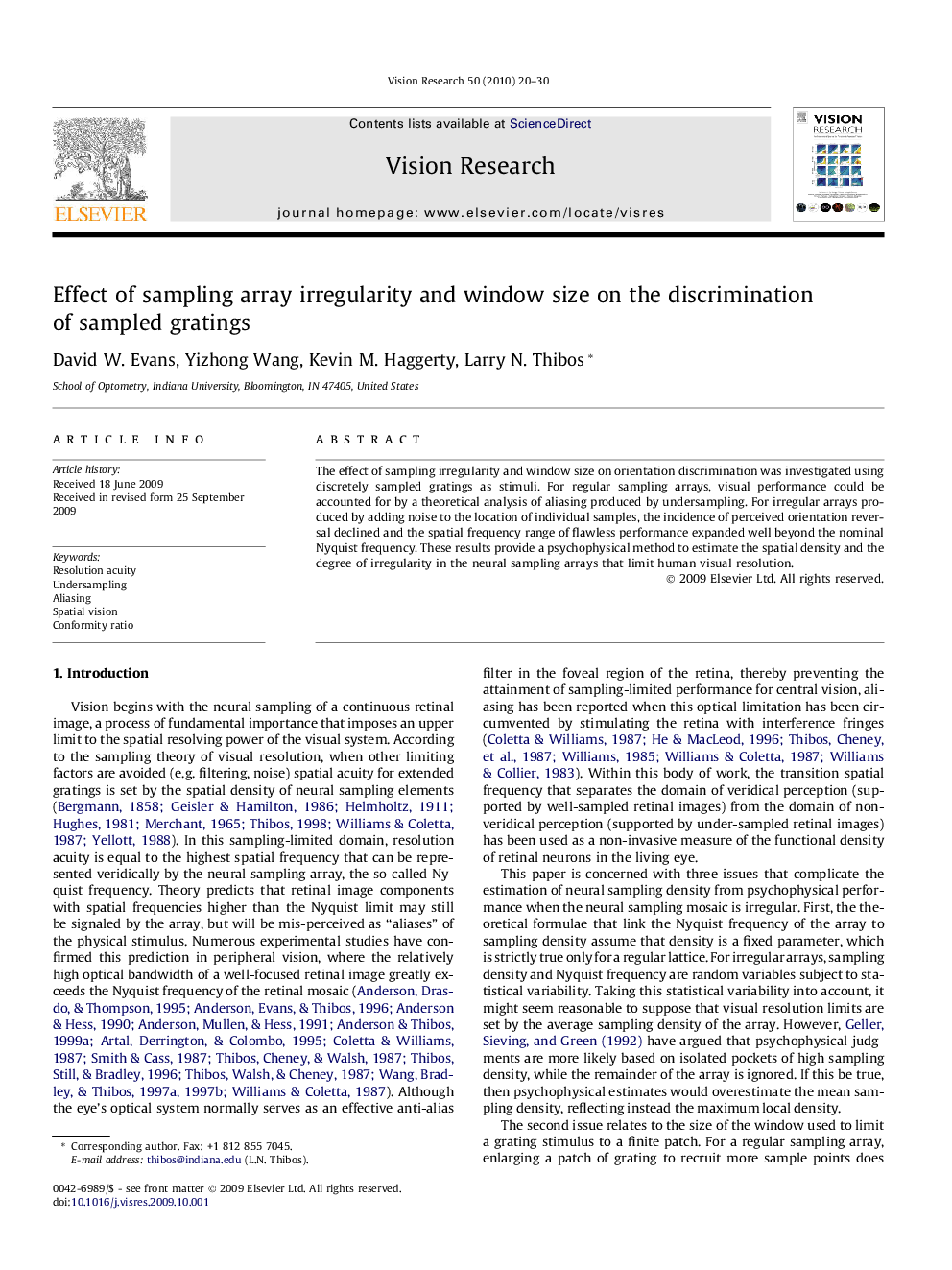| Article ID | Journal | Published Year | Pages | File Type |
|---|---|---|---|---|
| 4034585 | Vision Research | 2010 | 11 Pages |
Abstract
The effect of sampling irregularity and window size on orientation discrimination was investigated using discretely sampled gratings as stimuli. For regular sampling arrays, visual performance could be accounted for by a theoretical analysis of aliasing produced by undersampling. For irregular arrays produced by adding noise to the location of individual samples, the incidence of perceived orientation reversal declined and the spatial frequency range of flawless performance expanded well beyond the nominal Nyquist frequency. These results provide a psychophysical method to estimate the spatial density and the degree of irregularity in the neural sampling arrays that limit human visual resolution.
Related Topics
Life Sciences
Neuroscience
Sensory Systems
Authors
David W. Evans, Yizhong Wang, Kevin M. Haggerty, Larry N. Thibos,
